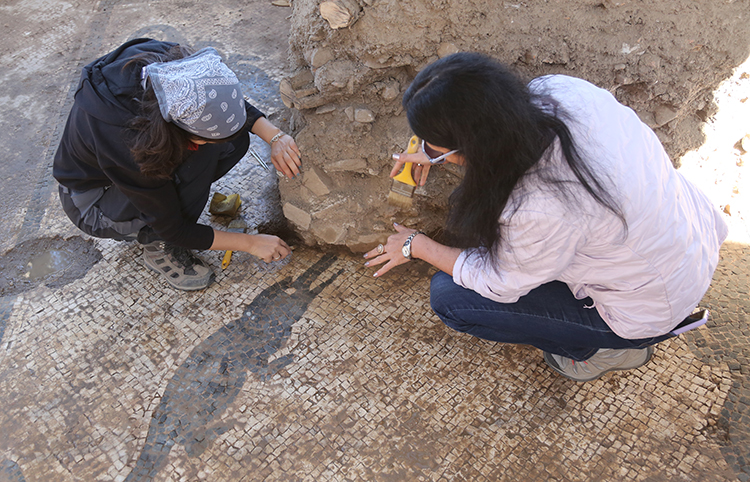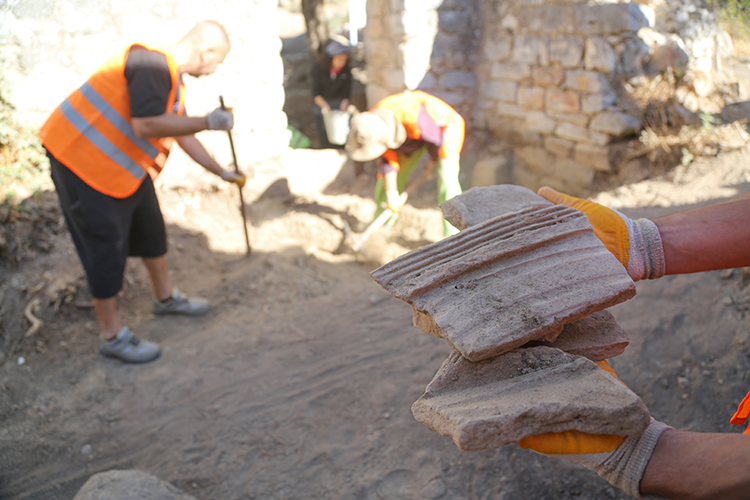
The only remaining structure of Herakleia, the Roman Bath, has begun excavation
Archaeological excavations have begun at the Roman Bath, the only remaining structure of the ancient city of Herakleia, named after the hero Heracles from Greek mythology.
Herakleia was established on the shores of the Latmos Gulf, an extension of the Aegean Sea. It is located near the village of Kapıkırı in the Milas district of Muğla, Türkiye, and its history dates back to the 5th century BC.
Over time, the gulf was filled with alluvium brought by the Menderes River, and today it is known as Lake Bafa.
The excavation director, Prof. Dr. Zeliha Gider Büyüközer, a faculty member of the Department of Archaeology at Selçuk University, noted that they have obtained data indicating that long-term settlement continued until the mid-13th century AD through the excavations.

Prof. Dr. Büyüközer stated that they are excavating an important structure, saying, “The Roman Bath is a very significant structure for the ancient city. It is the only remaining structure from the Roman period in Herakleia. With ongoing studies, we will also uncover other structures from the Roman period. It has been noted that the city lost its importance during the Roman period due to the closing of the gulf’s mouth. However, the data we have gathered over the past three years suggests that the city maintained its significance during both the Roman and Late Antiquity periods. Therefore, we are excavating an important structure.”

Büyüközer explained that the data will particularly help illuminate the city’s history during the Roman period.
Stating that they will uncover many details in the Roman Bath by the end of the year, Büyüközer said, “We currently know seven sections of the bath. Excavation work is ongoing in the Caldarium (the hot room in Roman baths). In our excavations, mosaics have been uncovered in the floors of two sections. We believe we will encounter similar flooring in the other sections of the structure as well.”
Cover Photo: Volkan Yıldız/Anadolu Agency
You may also like
- A 1700-year-old statue of Pan unearthed during the excavations at Polyeuktos in İstanbul
- The granary was found in the ancient city of Sebaste, founded by the first Roman emperor Augustus
- Donalar Kale Kapı Rock Tomb or Donalar Rock Tomb
- Theater emerges as works continue in ancient city of Perinthos
- Urartian King Argishti’s bronze shield revealed the name of an unknown country
- The religious center of Lycia, the ancient city of Letoon
- Who were the Luwians?
- A new study brings a fresh perspective on the Anatolian origin of the Indo-European languages
- Perhaps the oldest thermal treatment center in the world, which has been in continuous use for 2000 years -Basilica Therma Roman Bath or King’s Daughter-
- The largest synagogue of the ancient world, located in the ancient city of Sardis, is being restored











Leave a Reply